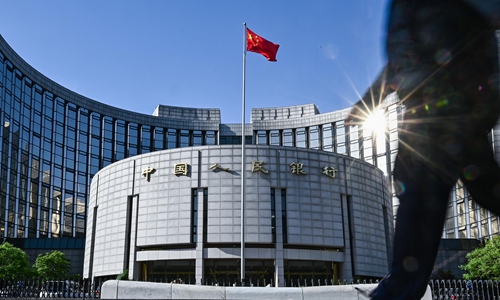
China’s central bank on Monday cut benchmark lending rates by the steepest margin since August 2019 when the market-oriented loan prime rate regime was adopted. The nation is striving to repair the damage of the coronavirus outbreak,which caused GDP to contract in the first quarter. Photo:cnsphoto
China's central bank pumped cash into the banking system via reverse repos to maintain liquidity on Thursday.
The People's Bank of China injected 70 billion yuan (about 9.86 billion US dollars) into the market through seven-day reverse repos at an interest rate of 2.2 percent, according to a statement on the website of the central bank.
The move aims to offset the impact of factors including government bond issuance and the maturity of reverse repos, and keep liquidity in the banking system at a reasonably sufficient level, the statement said.
A total of 240 billion yuan of reverse repos matured Thursday, resulting in a net withdrawal of 170 billion yuan from the market.
A reverse repo is a process in which the central bank purchases securities from commercial banks through bidding, with an agreement to sell them back in the future.
China's central bank pledged in its first-quarter monetary policy report that it will step up counter-cyclical adjustments to support the real economy, make the prudent monetary policy more flexible and appropriate, and continue to deepen the reforms of the market-oriented interest rate and the yuan exchange rate formation system.
